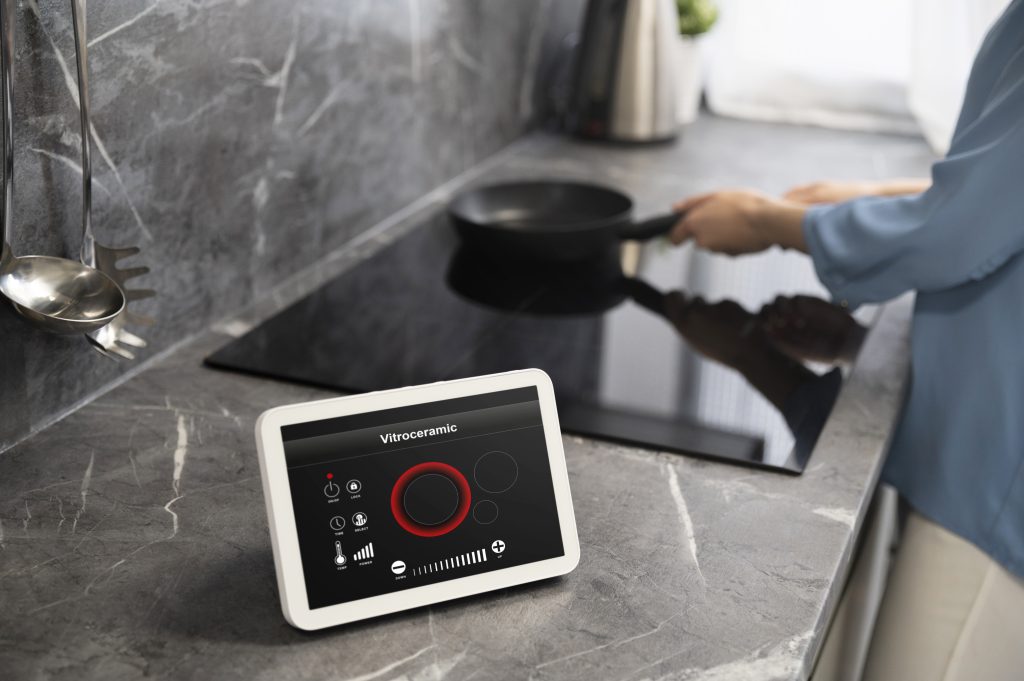Smart homes are evolving rapidly. What began as voice assistants and app-controlled lights is now becoming a complex ecosystem where artificial intelligence optimizes energy use, anticipates routines, and improves comfort while reducing waste. The emerging trend of AI-powered smart home energy efficiency is reshaping how people interact with their living spaces in 2025.
More than just convenient, these technologies are being designed to address urgent issues: rising energy bills, environmental sustainability, and the demand for seamless automation. From refrigerators that adjust cooling cycles based on usage patterns to sensors that learn when you leave a room, AI is turning the home into an adaptive, self-managing environment.

Why AI-Powered Smart Home Energy Efficiency Matters
AI-powered smart home energy efficiency is the practice of embedding artificial intelligence into devices and platforms so they can analyze usage patterns, predict needs, and manage resources intelligently. Unlike earlier smart home gadgets that required constant manual input, these systems act autonomously.
The impact is measurable. Studies show that smart thermostats alone can reduce heating and cooling energy use by nearly 18 percent. Smart lighting systems, when paired with AI and occupancy sensors, lower electricity consumption by as much as 30 percent. A global analysis found that in 2025, smart home devices collectively saved households an estimated 8.4 billion kilowatt-hours of energy, highlighting their tangible effect on efficiency. For homeowners, this translates into lower utility bills. For the planet, it means significant carbon reductions.
Trend #1: Ambient AI Sensing in Everyday Devices
One of the most exciting developments is the rise of ambient AI sensing. Instead of needing dedicated sensors scattered around a house, ordinary devices are now multitasking. Samsung’s SmartThings platform, for instance, enables everyday appliances like TVs and refrigerators to serve as motion and sound detectors. These devices can trigger automations such as turning off lights when rooms are empty, activating an air purifier when people arrive home, or adjusting temperature when movement is detected.
Homes are also becoming context-aware in ways that go beyond presence detection. New systems integrate environmental sensing—temperature, air quality, brightness—to adjust devices automatically. Imagine a living room where the TV dims its brightness based on ambient sunlight while the thermostat gently raises cooling output to compensate for heat from multiple occupants. This anticipatory design is creating homes that adjust naturally without requiring constant taps on a smartphone.
Trend #2: Neuromorphic Chips Enable Ultra-Low Power Devices
Another frontier lies in neuromorphic computing. Neuromorphic processors mimic the structure of the human brain, allowing devices to process sensory data locally with minimal power. Instead of relying on cloud-based AI, which requires constant connectivity and higher energy draw, these chips enable always-on sensing without draining batteries.
Innatera’s Pulsar chip exemplifies this shift. By activating only when signals are detected, it allows smart doorbells, cameras, and sensors to function efficiently for long periods. This technology also enhances privacy, since much of the processing occurs locally rather than sending data to remote servers. For energy efficiency, it means devices consume less electricity, last longer between charges, and require fewer hardware replacements—cutting both costs and environmental impact.
Trend #3: Interoperability Through Matter
Energy efficiency doesn’t just depend on devices—it depends on how well those devices communicate with each other. The Matter standard has emerged as a unifying protocol, enabling smart home products from different brands to work seamlessly together. Its latest updates include expanded support for energy-related systems such as solar panels, heat pumps, and EV chargers.
This interoperability makes whole-home energy management more practical. For example, a solar array can coordinate with a smart thermostat to pre-cool a home during sunny hours when electricity is abundant, while also managing EV charging at night during off-peak times. Without interoperability, these systems would function in silos, wasting potential savings. With Matter, homes are becoming orchestrated ecosystems, where energy is optimized across multiple systems.
Trend #4: Tangible Savings from Smart Adoption
The promise of AI-powered smart home energy efficiency is backed by real data. More than half of homeowners who adopt smart devices report noticeable reductions in energy bills. Smart thermostats alone account for the largest portion of savings, cutting HVAC energy use significantly. Lighting systems equipped with adaptive dimming and occupancy detection lower electricity costs by up to a third. Combined, a household integrating multiple smart devices can reduce overall consumption by as much as 30 percent.
Beyond bills, smart devices also help households track usage in real-time, creating awareness that encourages better habits. Energy monitoring platforms like Sense or Shelly EM reveal which appliances consume the most power, empowering families to adjust usage or upgrade inefficient models. This feedback loop makes efficiency visible, actionable, and rewarding.
Building an AI-Powered, Energy-Efficient Home: A Practical Guide
For those looking to embrace this trend, here’s a step-by-step approach to creating a home that balances comfort with efficiency.
1. Start with Smart Thermostats
Heating and cooling often account for nearly half of a household’s energy use. A smart thermostat is one of the fastest ways to save. Modern models use AI to learn schedules, adapt to weather forecasts, and balance comfort with conservation. Many utility companies even offer rebates to offset upfront costs.
2. Add Ambient Sensing Devices
Leverage devices that can detect presence, motion, and sound. TVs, fridges, or smart speakers with ambient AI capabilities can reduce the need for separate sensors and unify automation triggers.
3. Upgrade to Energy-Aware Lighting
Replace traditional bulbs with smart LEDs that dim, change color temperature, and switch off when rooms are empty. Pair them with AI-powered schedules that adapt to seasons and occupancy patterns.
4. Adopt Matter-Enabled Devices
Prioritize interoperability. Choose Matter-certified products to ensure smooth integration across brands, making whole-home automation easier and more energy-conscious.
5. Explore Neuromorphic Gadgets
Look for next-generation devices that incorporate neuromorphic chips. These deliver always-on sensing with ultra-low energy consumption, ideal for video doorbells, cameras, and wearables.
6. Monitor and Manage Energy Data
Use whole-home energy monitors to see where electricity is going. This awareness can highlight hidden costs—like inefficient appliances or phantom loads—and help plan upgrades.
7. Automate Schedules with AI
Allow algorithms to manage usage automatically. From shifting dishwasher cycles to off-peak hours to pre-warming rooms before arrival, AI scheduling ensures devices work smarter, not harder.
8. Track Progress and Refine
Review energy dashboards monthly. Adjust settings, add new automations, and fine-tune routines. Over time, incremental changes compound into major savings.
Looking Ahead: What the Future Holds
As AI becomes more embedded, future smart homes will likely expand beyond efficiency into predictive maintenance and self-healing capabilities. Imagine appliances that not only optimize their cycles but also alert you before a part fails, or energy systems that forecast peak pricing and adjust accordingly. With neuromorphic processors and ambient AI advancing, devices will require less cloud dependency, making homes faster, more private, and more sustainable.
Integration with renewable energy will also accelerate. As more households adopt solar panels, EVs, and home batteries, AI will become the conductor that ensures energy flows where and when it’s needed most. The result is a household that isn’t just efficient but also resilient and environmentally conscious.
Final Thoughts
The move toward AI-powered smart home energy efficiency reflects both technological progress and practical necessity. Rising costs and climate concerns demand smarter approaches to how we consume energy. By adopting ambient AI sensing, neuromorphic chips, interoperability through Matter, and practical energy monitoring, households can cut costs, reduce environmental impact, and enjoy seamless automation.
In 2025, the smartest homes are not simply connected—they are energy-conscious ecosystems. For professionals, families, and sustainability-minded homeowners alike, investing in these systems is less about luxury and more about building a home that works intelligently for both people and the planet.
References
- CSA Unveils Matter 1.4: New Horizons for Smart Home Interoperability & Energy Management, https://www.graniteriverlabs.com
- The Future of Home Comfort: https://www.woodlandsonline.com
- How Home Automation Is Revolutionizing, https://www.bhg.com









